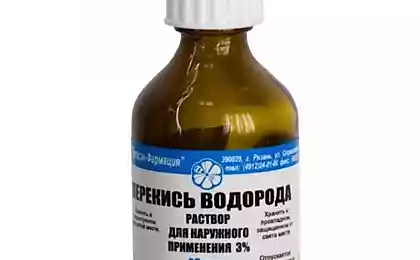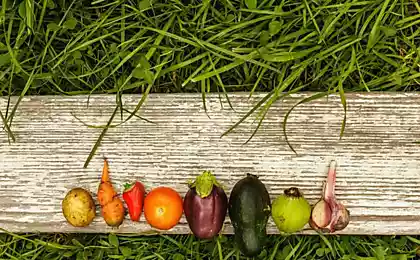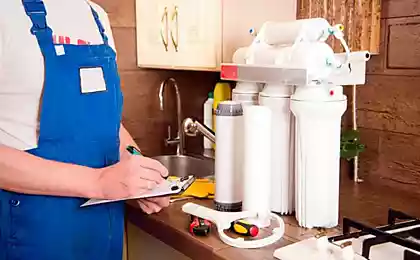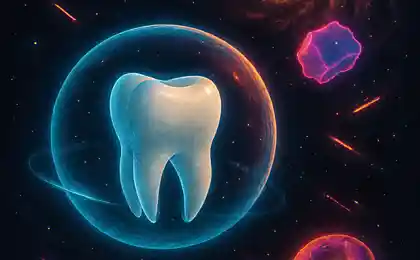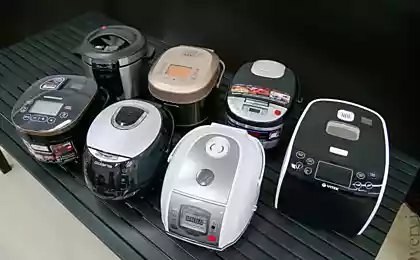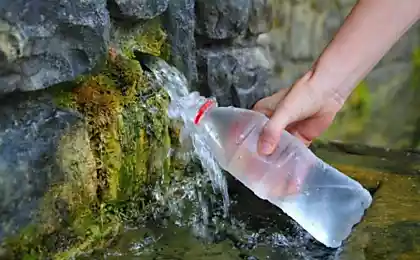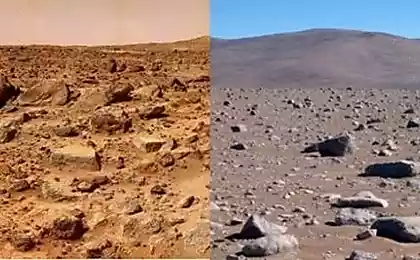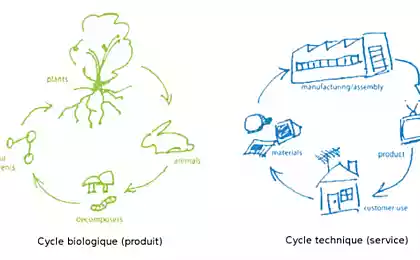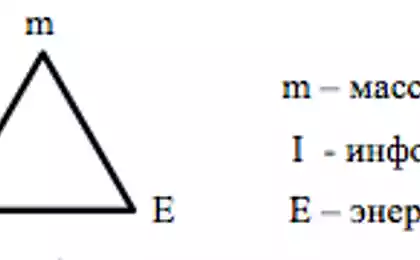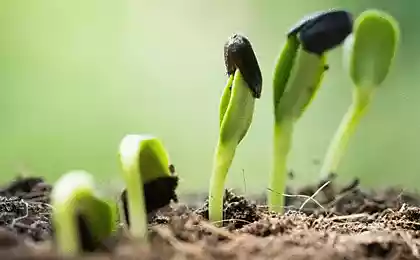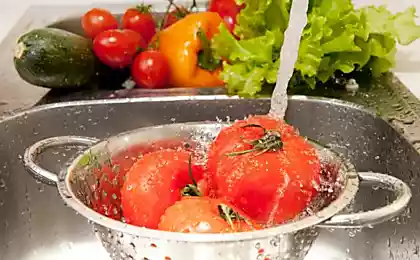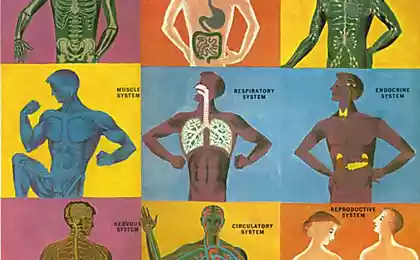522
A little chemistry: water disinfection in the nature

85% of all known diseases are transmitted through water.
If the hand is not suitable for drinking water, but there is not the cleanest river, or even the marsh — water from there is possible to clean yourself. Potassium permanganate, hydrogen peroxide or iodine — and no magic!
The main way to disinfect water is boiling. In severe cases, lasting up to half an hour.
Boiling allows you to remove all types of contaminants — pathogens of diverse nature, toxins are a large part of toxic substances. Boiling not only removes mineral contamination, but it generally difficult to remove universal way.
Boiling doesn't require any chemicals and instruments, just wood and a pot, and the boiling not to overdo it.
Another very effective method is filtration. Even the simplest of sand or fabric filter will remove solid suspended particles, thereby clearing the cool water. And there are special Hiking filters are very effective. Everything is determined by the cell size of the filter, which can delay even bacteria and other large pathogens. In this article the filters are not considered, but we recommend to pay attention to them — has now become one of the most effective camping filters, and they're cool in terms of benefits to the weight-volume.
The use of oxidants as effectively in not too severe cases, when boiling is not possible or inconvenient.
The essence of the method — in each molecule of the oxidizing agent is an atom of oxygen (or chlorine) which is easily separated and can oxidize some object in the water. When heated or in direct sunlight, they disintegrate even during storage, "firing" its oxidizing capacity.
The water has a "number of oxidation", that is, the amount of oxidizable organics in the water sample expressed in weight needed for this oxylates. This includes all microbial pathogens, but not only they — algae, dissolved soil compounds and other manure. Although these algae are not harmful to humans, to oxidize have it all together.
The most difficult — to add in a water sample as much oxidizer, how much corresponds to the number of oxidizability. Not less, to ensure safety, but no more, not drinking an excess of oxidizer in the water. At the same time, never know exactly how much you need each water sample is different.
The most convenient oxidizing agent is potassium permanganate, potassium permanganate. He — and most effective weight. And transported well, because the dry powder.
Convenient potassium permanganate that the initial form of the oxidant (permanganate-ion) purple is the color that everyone knows. And worked out — (oxide of manganese) color does not matter, and falls in the form of a brown sludge.
That is sufficient to carry out the process of the gradual addition of solution of potassium permanganate into the water and wait until it will be only slightly pink color.
Unfortunately, you need to give time for the oxidizing agent to oxidize all reliable. Something like half an hour. The concentration of a small excess of the reagent is almost there, so it takes time to all micro-organisms found their dose of oxidant.
To ensure the reaction time, it is better to collect water in bottles and add oxidizer on a single halt, and eat an hour later at the other halt. If potassium permanganate is added too much, and the color excess — you can try to bleach her powdered activated carbon, or charcoal from the fire. The disappearance of color is a sign that the water is safe to drink.
Oxidizers are perfectly combined with filtration and boiling. The best scheme is as follows:
1. Primary filtering, even through a simple filter to remove suspended particles and pieces of organic matter. It is necessary that the oxidizer was not spent on these pieces of algae, which need it very much, and absolutely nothing.
If the filter is a highly efficient filter — the better.
2. The addition of the oxidant, as described above. Waiting until you work up to half an hour.
3. But you can immediately begin to boil. Heating increases the efficiency of the oxidizer, as at the time, and his aggressiveness. In addition, boiling will destroy any excess oxidant, removing the question of its neutralization. Well, in itself, boiling away much helps.
4. To remove the precipitate/suspension. Either a primitive type filter fabric (not the same as in p. 1!), or let settle and not drain from the bottom. Precipitate after boiling fall of salt water hardness (white), will have the remainder of the potassium permanganate (brown. also not a gift for the body, especially with prolonged use), well, all sorts of hypothetical defeated microbes also can be there.
The types of oxidants.
1. Potassium permanganate, as already mentioned, the best. Like all oxidizers, should be protected from heat and direct sunlight. Besides well kept long. Has a beautiful visible sign purple color ready-to-use oxidizing agent, than you can check the safety. Can be stored in any container, because it is a powder. Even in the plastic can.
2. Gidroperit. It clatrat (solid compound) of hydrogen peroxide with urea. Available in pill form as well and stored. Agent — hydrogen peroxide. In terms of solid weight twice less effective than potassium permanganate. In addition, adds to the water urea. Afraid this is not necessary, is a substance without taste and smell, used as a fertilizer, harm is not. Even in the advertising of javacc is mentioned. But in General, the constant a generous application of peroxide is not recommended because of the urea. Once a great way, if not of potassium permanganate. Stored fine too.
3. Perico hydrogen liquid. The ideal oxidizing, by selecting the atom of hydrogen, it turns into plain water. Else — cons — water form, and not more than 20-30%, is unstable and slowly samarasekera. In the sale of a concentrated peroxide doesn't come across at best 3%. In terms of weight of 3% peroxide is less effective than potassium permanganate in 20 times!
4. The sodium hypochlorite. This is the first in the list-chlorine oxidizer. That in itself is a concern because the products of oxidation may not be very useful. But readily available in hardware stores is regular liquid bleach type "White" or thickened to its gel counterparts. It is possible to distinguish so — all these gels for the cleaning of toilets, sanitary ware, etc. — if the chlorine smell — it means it. In addition to the hypochlorite in these funds there is alkali ("White"), it slows down the process of samorazdrazheniya and all sorts of flavors, and gelling agents in gels. Nothing terrible, but would be better if they were smaller. In the States there is the concept of "household bleach" is exactly it, the 5% hypochlorite, about the same as us "White". The percentage paroled from the factory it can be produced and 10%, but every month of storage to lose interest. In comparison with potassium permanganate hypochlorite ineffective weight 7 times, poorly stored is a liquid, chlorine is an oxidizer. However, in the case of BP and the looting of kosmakov is a great trophy for the disinfection of water.
5. Iodine, crystalline and 5% of pharmacy. Also non-oxygen oxidizer, like chlorine, only iodine. Crystal to by unrealistic, although here it is well kept. Toxic to humans, and not just for microorganisms. 3% pharmacy iodine ineffective by weight relative to the potassium permanganate in 80 times. But it is easy to buy everywhere. Should be used with caution — lethal dose of iodine for a person is not great, something like 3 grams (LD50). In terms of solid iodine, of course.
I must say that the original choice of water must be reasonable, even though it is obvious. For example, salt water is almost the same, except ionoobmennogo filter, not clean. Well, another membrane with reverse osmosis.
The water from the fields, where too much manure or mineral fertilizer is also not worth taking — boil-do not boil, they will remain there. As such, pathogens fertilizers are not. But the body such water use will bring.
Swamp water can be oxidized grams of potassium permanganate, and still it wouldn't be terribly useful.
That is, field treatment has its limits of applicability.
App.
1. Values oxidation: water of lowland rivers usually has a biochemical oxygen demand of 5 to 12 mg O2/litre, rivers, swamp food — tens of mg per liter. Trasianka and melt water of the glaciers — almost zero.
www. gicpv. ru/him29-5.htm
According to SanPiN, water sources of the centralized municipal water supply must have an oxidation 5-7 mg/l. Well it and is clear, water from our rivers.
But this is milligramme oxygen! The terms of permanganate is multiplied by 7.
That is, the water of lowland rivers — 35 mg per liter. For swamp water, with its dissolved organic matter of peat up to 700 mg per liter. Glacier water and artesian has almost zero private oxidation.
What exactly is your water — see for yourself, no one in advance can not say that universal values are not. Only to navigate between the "river water" and "marsh".
How to separate the necessary quantity of potassium permanganate in field conditions? Obviously, you can divide the grams still at home. Grams is too much. Then — well, let's put the whole gram track, and share. Or solder grams in sacks.
2. Other oxidizing agents, with respect to the potassium permanganate by weight. The oxidizing ability is expressed in gram-equivalents, that is, the weight of oxidizer needed to oxidize 1 mol of a substance. The smaller the better/benefit ratio weight.
G-EQ of potassium permanganate 53 taken it for 1.
2A. Perico hydrogen has EQ 34, it would seem that cool. But it is the pure peroxide, is not found in nature. 3% solution in 33 times weaker, began to be 1000. The potassium permanganate 3% solution of peroxide is 20 times weaker.
2B. Gidroperit is g-EQ 100, potassium permanganate is two times weaker. Too bad.
2B. Iodine has EQ 126 that is 2.5 weaker potassium permanganate. But this is crystal iodine. And drugstore 3% solution in 33 times weaker, in the end, it is relatively weaker potassium permanganate in 80 times.
2G. sodium Hypochlorite has the EQ 37 (in a neutral environment), but in 10% solution — 370. Regarding the potassium permanganate — 7 times.
3. By the way, all the oxidation tap water remove the chlorine even at the water treatment plants. Before — directly with gaseous chlorine. This year in Moscow passed on hypochlorite has launched a major site generation of hypochlorite. It is convenient, simple hypochlorite is generated by electrolysis of salt solution, it is not necessary to carry and store — just in case.
The chlorination of urban water is a typical example of the oxidizing agent decontamination. Because:
Primary filtering is to be applied.
The desired amount of oxidizing agent is constantly calculated on the fly, via sampling. That is, more-less, they are constantly monitored, depending on the condition of the river water.
The time required for the reaction is the time until the water flowing in the pipes, certainly more than an hour.
In the end, the smell of chlorine in tap water almost no, there is no harm, and suitability for drinking is.
This is to ensure that the processing of chlorine oxidants is completely safe if it is done correctly.
To write this article I made the case. Yesterday I went to a normal shop (indoor) and bought it in the gardening Department of the potassium permanganate. In bags of 10g. As much as you want. A whole box of her lying — do not want to take. At 37p per packet, not cheap of course. But without restrictions. It happened in mega Teply Stan. Rightly said that potassium permanganate bought in quantities in stores for gardeners. published
P. S. And remember, just changing your mind - together we change the world! ©
Source: www.livejournal.com/magazine/838758.html


